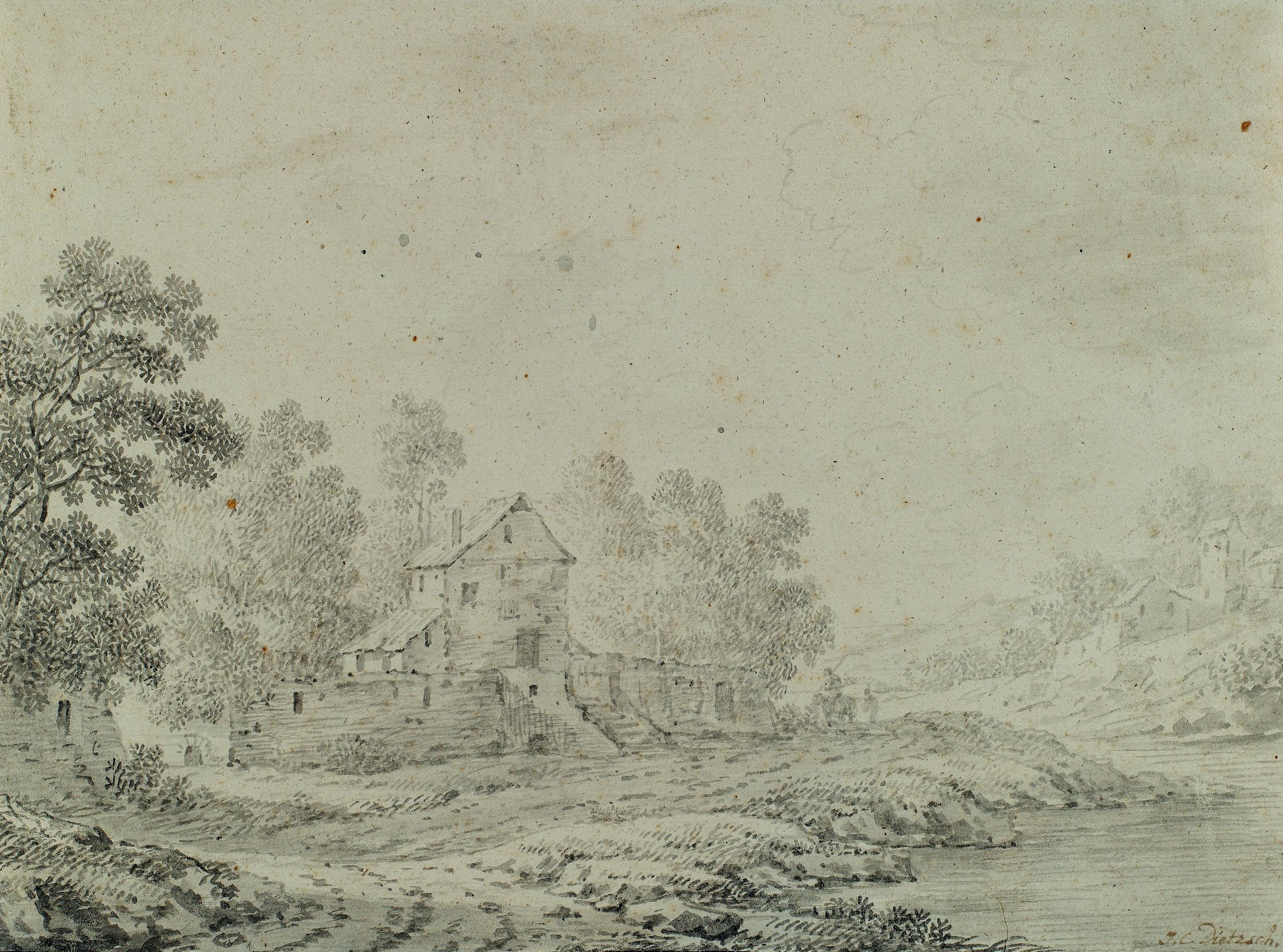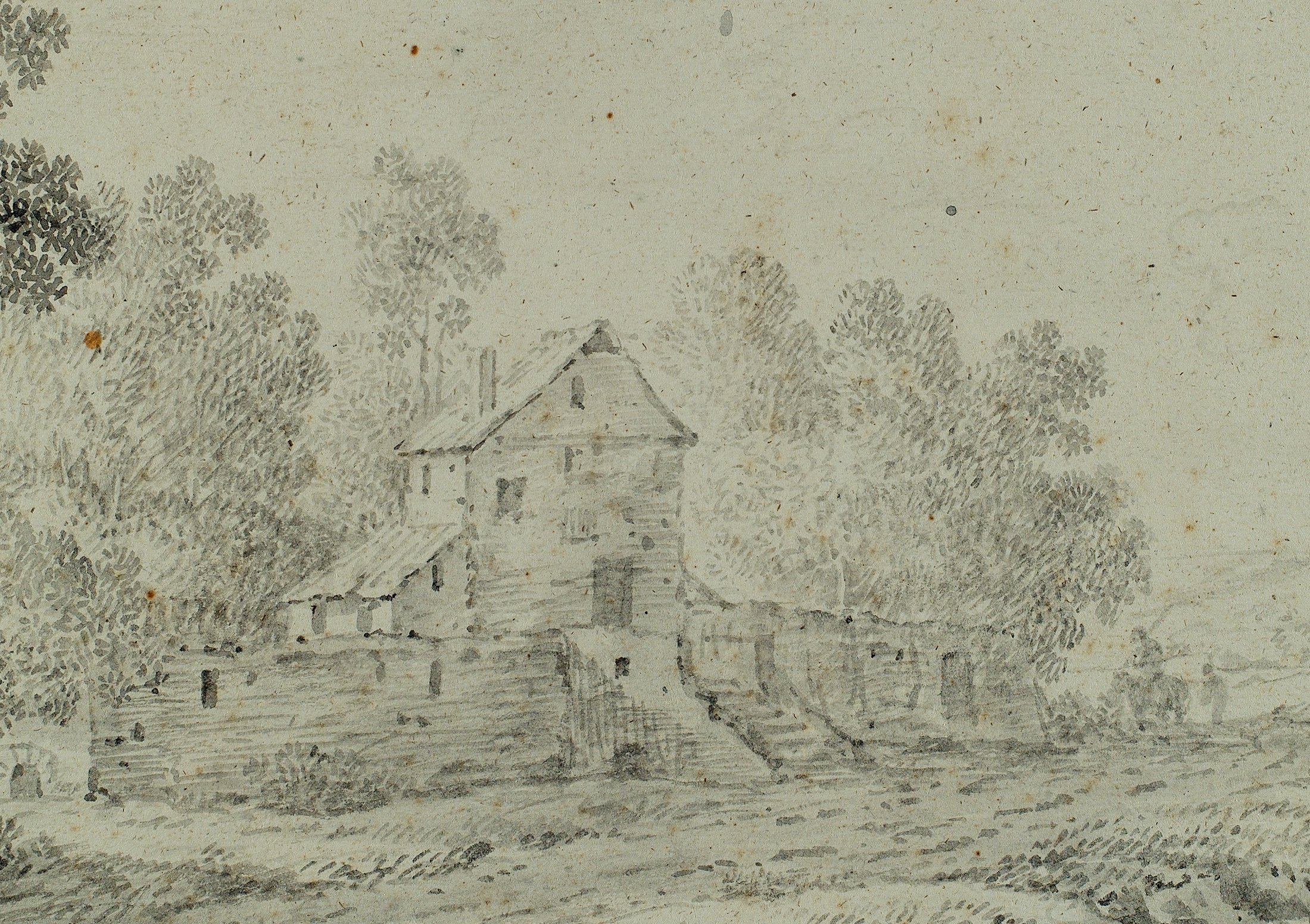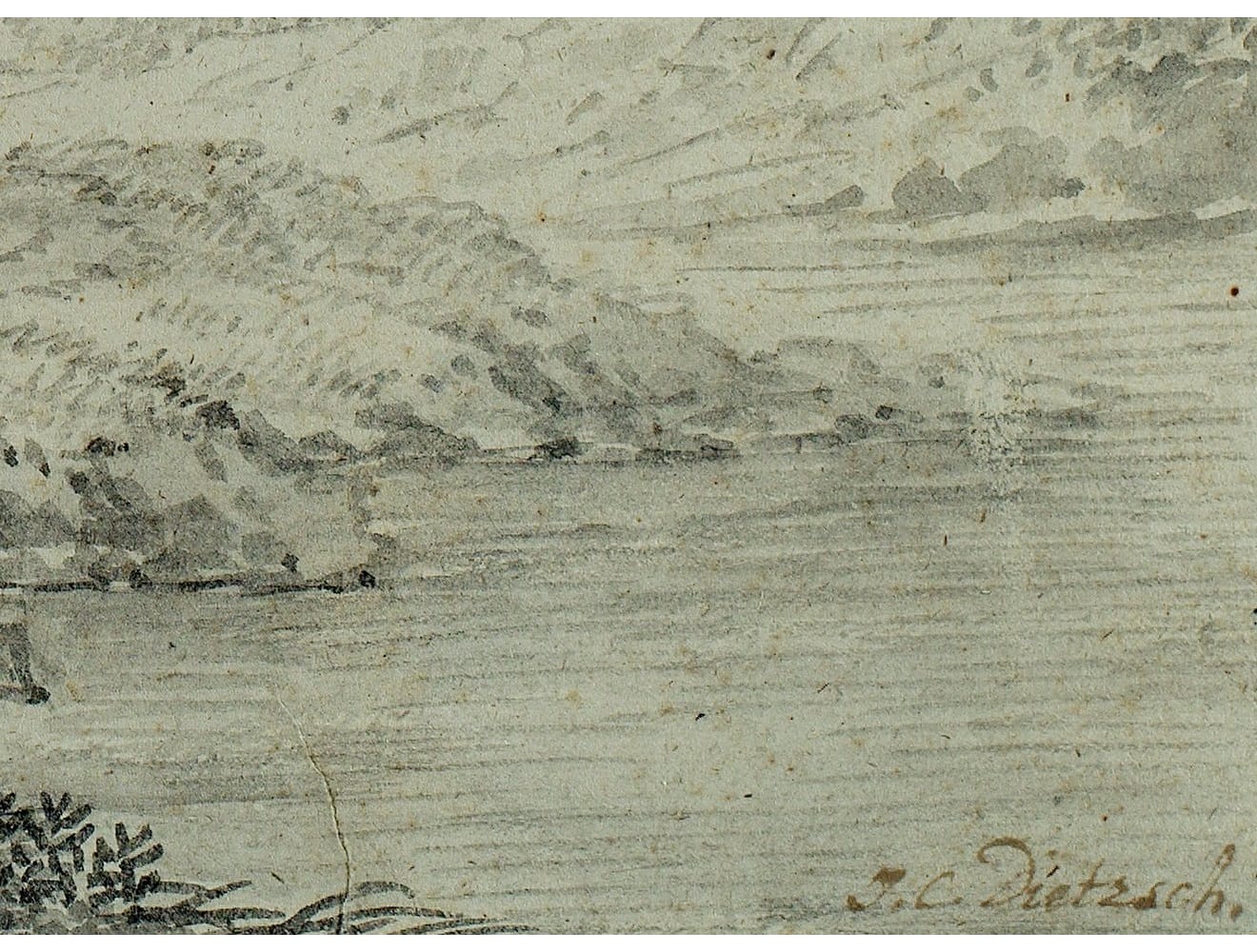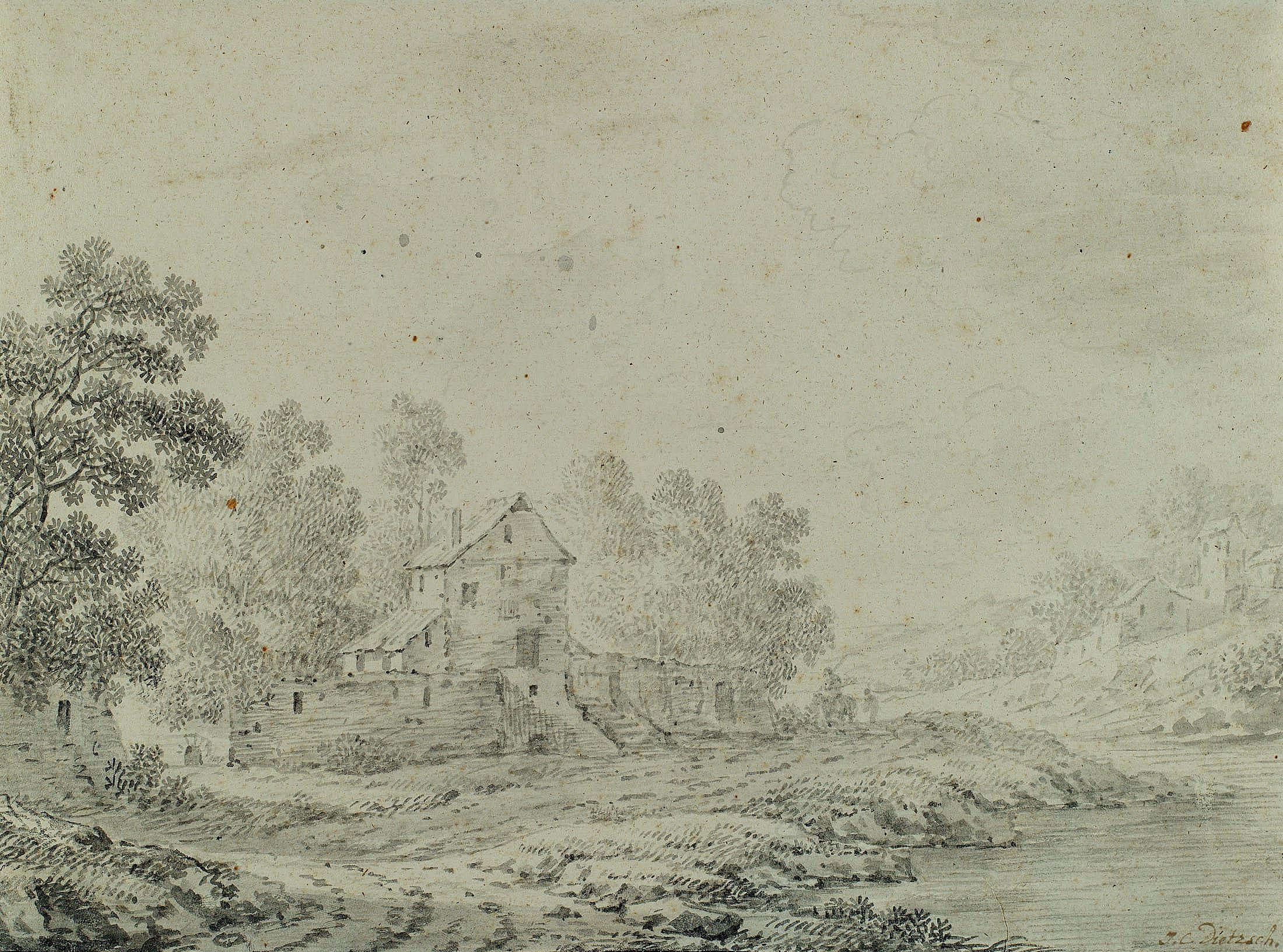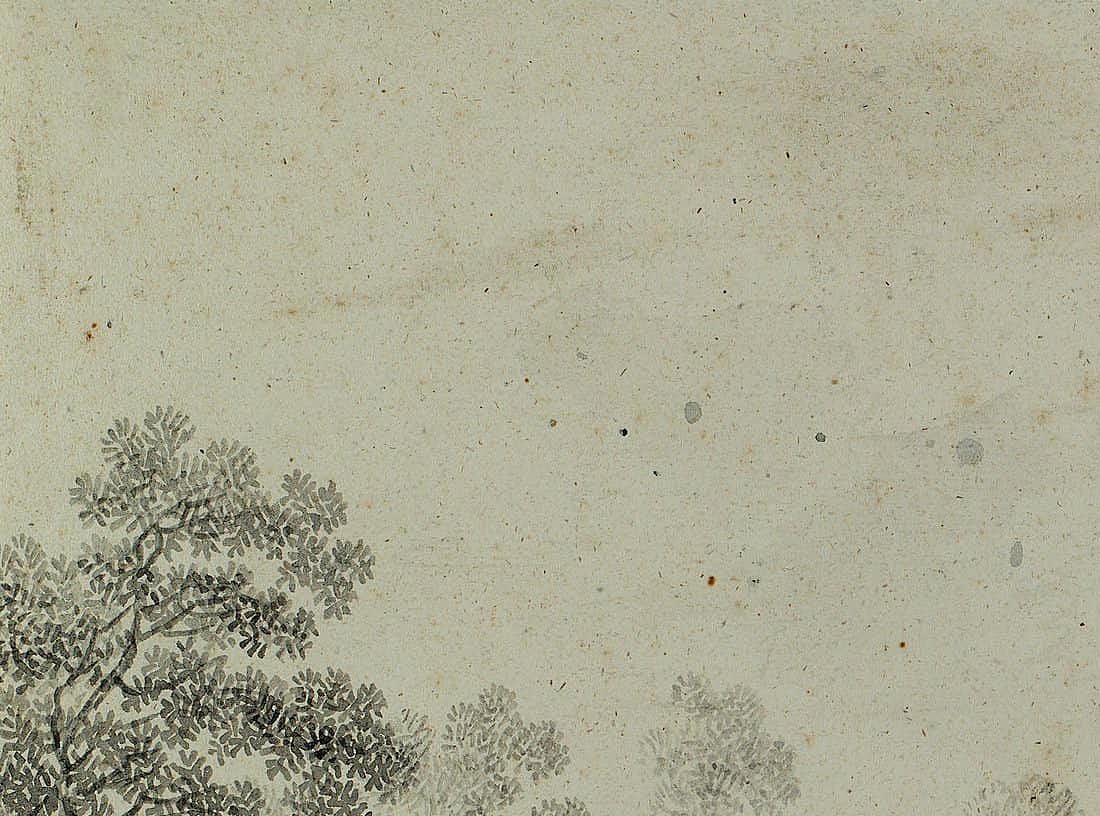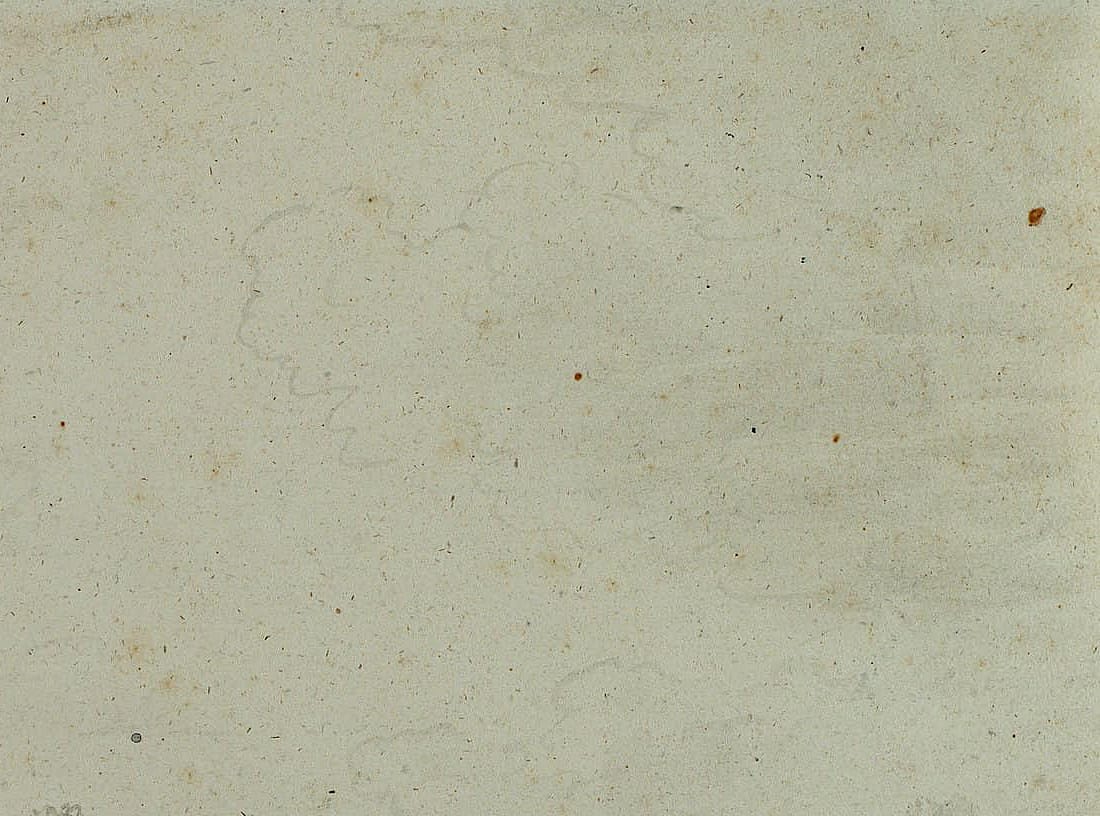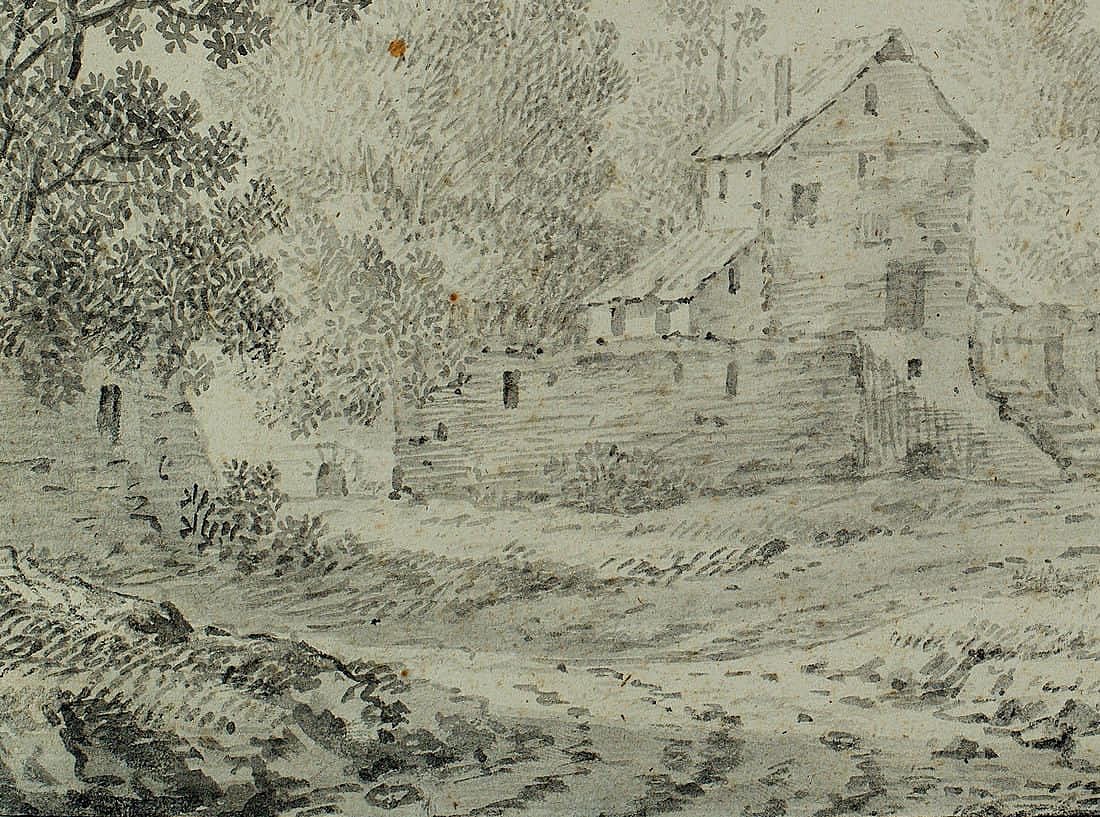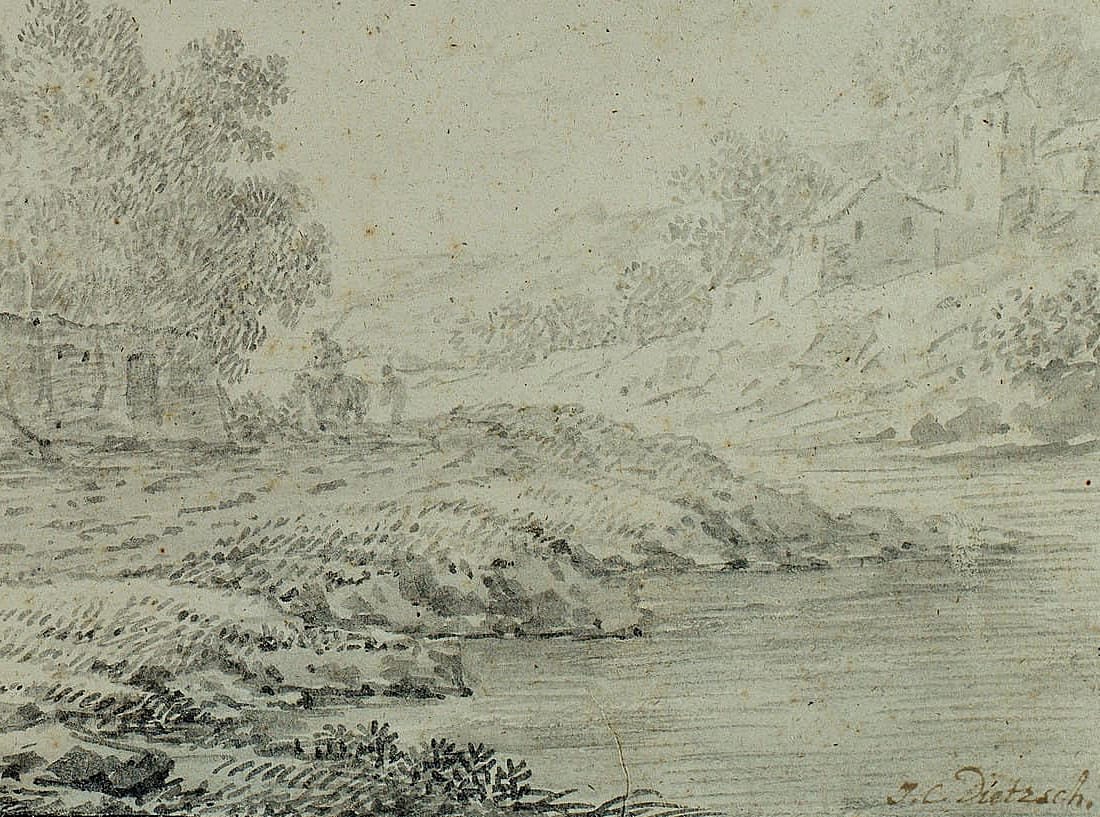Johann Christoph Dietzsch (1710 Nürnberg – 1769 ebd.), Landschaft mit Gehöft, um 1750, Tusche
- Technik: Tusche auf Papier
- Bezeichnung: Unten rechts signiert: “J. C. Dietzsch.”.
- Datierung: um 1750
- Beschreibung: Mit Blumen- und Fruchtstücken, Küchenstillleben, vor allem aber mit kleinen, poetisch vorgetragenen Landschaften, versorgte Dietzsch, zweitältester und erfolgreichster Sohn einer großen Künstlerfamilie, einen stetig wachsenden Kunstmarkt, der sich nicht allein auf Deutschland beschränkte, sondern sich auch auf England und die Niederlande ausdehnte. Vor allem bürgerliche und adelige Sammler mit privaten Kabinetten fanden Gefallen an den zierlich ausgeführten, bildhaften Zeichnungen und Druckgraphiken des Künstlers. Dietzschs Einflüsse waren komplex und schlossen die holländische Malerei ebenso ein, wie die Landschaften der eine Generation zuvor in Nürnberg tätigen Maler Willem van Bemmel und Johann Franz Ermels und das aktuell aufkommende Interesse an Reiseskizzen und pittoresken Ansichten. Ein schönes Beispiel für diese “Plaisanten Prospekte”, wie Dietzsch eine 1737 entstandene Folge von Landschaften nannte, ist die vorliegende Tuschzeichnung: Ein verwinkeltes, am Fluß liegendes Gebäude, hinterfangen von hohen Bäumen. Leicht aus der Blattmitte gerückt um einen statischen Eindruck zu vermeiden, liegt das Haus jenseits eines Pfades am Fluß. Auch Wasser und Weg sind bewegt, verlaufen kurvig und lebendig und verbinden den detailliert und dunkler ausgearbeiteten Vordergrund mit der hellen, sanft lavierten Ferne unter dem hohen Himmel. Dietzschs umfassende Kenntnis von Kompositions- und Farbregeln ist spürbar. Grade in Nürnberg, wo Sandrart 1662 die erste deutsche Akademie gründete und 1675 mit der “Teutschen Akademie” die erste kunsttheoretische Schrift in deutscher Sprache veröffentlichte, bildete der künstlerische Regelkanon eine unverbrüchliche Basis für jeden Maler und Zeichner. Doch entgeht Dietzsch der Gefahr der Pedanterie. Seine zeichnerische Grammatik beherrscht er so souverän, daß er den klaren Aufbau, die Staffelung der Bildräume, das Aufhellen des Hintergrundes und die gut platzierte kleine Staffagegruppe rechts der Mitte zu einem gänzlich unakademischen Eindruck verbindet, dem eine natürliche Anmut eignet. Dietzschs Naturbeobachtung und sein Baumschlag wurde bereits von den Zeitgenossen gelobt. Diese Sorgfältigkeit im Einzelnen führt dank Dietzschs ausgeprägtem Gefühl für die Stimmung der Szene nicht zur Vereinzelung der Details. Hinzu kommt, daß sein Strich stets bewegt ist, auch in dunkleren Partien leicht bleibt und manchmal – etwa im Bereich der Figuren mit dem Pferd – Motive nur andeutet ohne sie gleichwohl völlig kenntlich zu machen. Es ist die hier so gekonnt vorgestellte Begabung für das Stimmungshafte, die seinen Landschaften große Bewunderung einbrachte. | Wasserzeichen: undeutlich
- Schlagworte: Landschaft, Fluss, Gehöft, Landschaft, Deutschland, Klassizismus, 1750-1799
- Größe: 21,5 cm x 29,3 cm
- Zustand: Guter Zustand. Leicht restauriert, leicht fleckig.
English Version:
Johann Christoph Dietzsch (1710 Nuremberg – 1769 ibid.), Landscape with farmstead, c. 1750, Indian ink
- Technique: Indian ink on Paper
- Inscription: Lower right signed: “J. C. Dietzsch.”.
- Date: c. 1750
- Description: With flower and fruit pieces, kitchen still lifes, but above all with small, poetically presented landscapes, Dietzsch, the second eldest and most successful son of a large family of artists, supplied a steadily growing art market that was not limited to Germany alone but also extended to England and the Netherlands. Especially bourgeois and aristocratic collectors with private cabinets took a liking to the artist’s delicately executed, pictorial drawings and prints. Dietzsch’s influences were complex and included Dutch painting as well as the landscapes of the painters Willem van Bemmel and Johann Franz Ermels, who had worked in Nuremberg a generation earlier, and the current emerging interest in travel sketches and picturesque views. A fine example of these “Plaisant Prospekte”, as Dietzsch called a series of landscapes created in 1737, is the present ink drawing: a winding building lying by the river, backed by tall trees. Moved slightly out of the centre of the page to avoid a static impression, the house lies on the other side of a path along the river. The water and path are also moving, curving and lively, linking the detailed and darker foreground with the bright, softly washed distance under the high sky. Dietzsch’s extensive knowledge of composition and colour rules is palpable. Especially in Nuremberg, where Sandrart founded the first German academy in 1662 and published the “Teutsche Akademie” (German Academy) in 1675, the first art theory in the German language, the artistic canon of rules formed an unbreakable basis for every painter and draughtsman. Yet Dietzsch escapes the danger of pedantry. He masters his graphic grammar so confidently that he combines the clear structure, the staggering of the pictorial spaces, the brightening of the background and the well-placed small group of staffage to the right of the centre to create an entirely unacademic impression that has a natural grace. Dietzsch’s observation of nature and his tree strokes were already praised by contemporaries. Thanks to Dietzsch’s distinct feeling for the mood of the scene, this meticulousness in detail does not lead to the isolation of details. In addition, his stroke is always animated, remains light even in darker areas and sometimes – for example, in the area of the figures with the horse – only hints at motifs without making them fully recognisable. It is the talent for the atmospheric, so skilfully presented here, which has earned his landscapes great admiration. | Watermark: undeutlich
- Keywords: Landscape, River, Homestead, 18th century, Classicism, Landscapes, Germany,
- Size: 21,5 cm x 29,3 cm (8,5 x 11,5 in)
- Condition: Good condition. Lightly restored, slightly stained.

